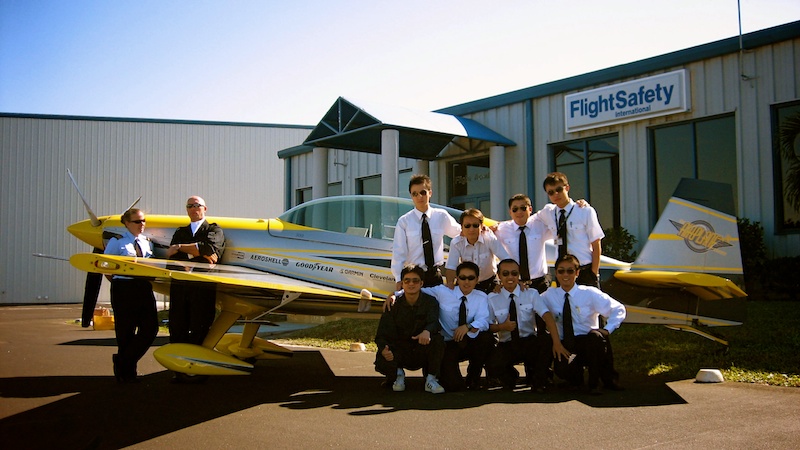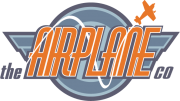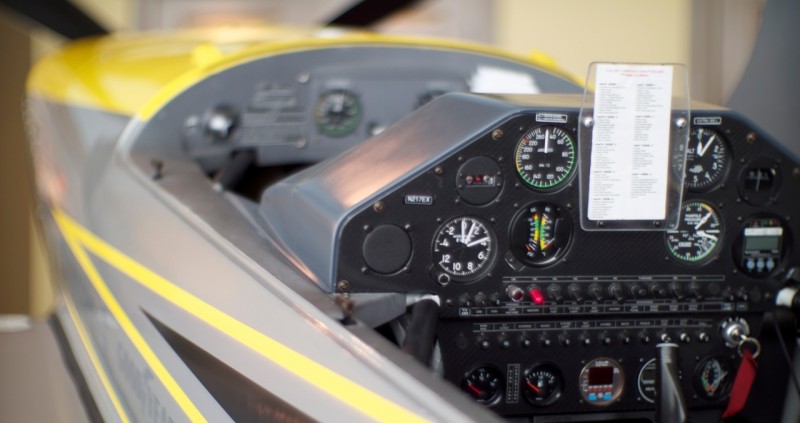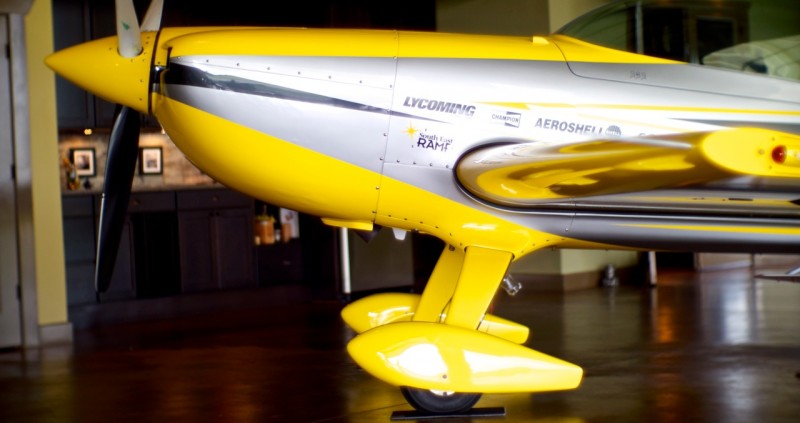Why we need upset recovery training
As loss of control in flight continues to rack up the greatest number of fatalities each year, it only becomes more evident that pilots are not comfortable and have little training outside of normal (predictable) flight modes. Amazing as the finest simulators available can be for training procedure and basic aircraft setup, simulator algorithms do not come close to the accuracy needed to correctly demonstrate what really happens as an aircraft departs normal flight, enters stall, and what lies beyond. A stalling upset maneuver demonstrated in a Level D simulator usually gets little reaction from an experienced pilot. The very same maneuver demonstrated in actual aircraft is met with the pilot screeching expletives and reaching for something to hold on to. This is know as “startle factor” which is rarely if ever seen in simulation. It’s the moment you are struck with attitudes, roll and pitch rates, sounds and sensations you’ve never experienced before. These sensations can be crippling for many pilots, not allowing you to think or react coherently. As pilots we rely on instinct. If we’ve had little training in upset attitudes we tend to do what comes naturally by pulling up fast and hard. This reaction is most often the worst possible correction for upset situations. Our instructors see it over and over again with pilots of all experience levels and it continues to lead to more hull losses and fatalities every year.
“The goal of upset recovery training is to increase the pilot’s ability to recognize and avoid upset situations while improving the pilot’s ability to recover control if avoidance is not successful. Moreover, to tame the pilots natural reaction to pull on the yoke when normal pitch and bank angles are inadvertently exceeded …”
We’ll say it again and again; mitigating loss of control in-flight is not just about stick and rudder skills. It’s also about a mental preparedness and situational awareness. Being ahead of your aircraft and knowing what to look and listen for should aircraft upset and loss of control be unavoidable. When such a situation arrises, that’s when your rote skills of how to properly react and recover must take over instantly, commandingly, and confidently in order to have successful outcome.
Our Training
Each lesson package is designed with specific goals and our unique training training philosophy. We understand that you may learn differently and may have different comfort levels and fears. We are also not going to try to make you a PHD in aerodynamics over night. We learn about your flight experience and begin teaching at your level of understanding to better develop your knowledge. Our instructors will help you develop comfort and understanding of the course material and flight lesson tasks at your pace. We help you push yourself to learn and develop more commanding and confident knowledge and skill.
The Airplane Co. teaches only standardized courses that use a building block method to develop your knowledge, motor skill, alertness, and comfort level throughout the flight envelope. This means the same lessons and techniques are taught to all personnel in your flight department keeping everyone on the same page. These are core lessons that you can apply to flying any fixed wing aircraft from general aviation, commercial transport, cargo, military, you name it. Our goal is to build better, smatter, more confident and skilled pilots, one at a time. This training is key to that foundation.
Our courses are approved for FAA, JAA, and CAAC flight curriculums.
Ground School
All courses begin with ground study which prepares you for your flight lessons. Ground school can be conducted in a group (classroom) or a one-on-one environment, whichever suits the needs of you or your flight department. Classes are best kept below eighteen students to allow for ample question, discussion, and participation by all. Although we are happy to work with pilots individually, a group environment during briefings allows for sharing of experience. This is especially beneficial during pre and post flight briefing.
“It is with pleasure that I say thank you on behalf of FlightSafety for offering an extensive variety of training in Upset Recovery to our pilots. Throughout our partnership I have been impressed with the quality of training and level of safety that your company has provided … our pilots walk away from the experience with preparatory knowledge … and valuable lessons on how to correct an aircraft when experiencing an unusual attitude. ~ Daniel Greenhill • Center Manager, Flight Safety International”
Ground Curriculum
Ground school is our opportunity to bring you back to the basics of flying an aircraft as opposed to operating one. We start by reacquainting you with aerodynamic theory and develop into study of wing stall in multiple configurations, flight attitudes, at both low and high altitudes. We include advanced high altitude theory for those pilots operating in flight levels or swept wing aircraft. With your renewed understanding of aerodynamic theory we then begin to apply these concepts in terms of energy management, force vectoring, and control input theory. It’s not as complicated as it sounds. We will walk you though it step by step and promise you’ll have a eureka moment when it all will come together both in the classroom and cockpit.
Moving on you’ll learn how human factors play a part in aircraft upset. You’ll discuss scenarios in both the single and multi crew environments and review NTSB studies of actual loss of control inflight incidents. You’ll discuss where the breakdown in situational awareness occurred, contributing factors, commands and inputs given, and how you would have reacted if faced with the same scenario.
Lastly it’s time to put it all together, which by this point you’re now well ahead of the game. You’ll discuss techniques to commandingly control your aircraft in multiple attitudes, energy scenarios, all while safely operating within the flight envelope of your aircraft. If you have no further questions it’s time to head to the flight line and apply what you’ve learned while developing your confidence and physical technique.
Citation + Eclipse Jet (single pilot / VLJ) courses conform to FAA Advisory Circular AC 61-137 for single pilot aircraft training. Let your instructor know in advance if you will require this endorsement.
Flight Lessons
With your new knowledge of aircraft upset recovery you’re going to be excited to strap into one of our Extra 300 aircraft to test your knowledge and develop your skill. You’ll have ample time to do this over the course your flight lessons. Note: none of our lesson packages have any set flight time or limit. Remember, you set the pace. When your stamina is diminished so is your ability to learn. Therefore it’s time to fly back to the hangar and take a break. A five flight lesson course can be divided into three or seven flights, even more if needed. What matters is your understanding and completion of the lesson tasks. Essentially printed lesson equals one flight but you may like to take a different pace. There will be no looking at your watch, just look out the canopy, follow the guidance of your instructor, and enjoy the lessons. Yes, we know it’s a different approach but it really works well.
“The pilot should never be the weakest link in the safe outcome of any flight … ~ Captain David Hackett“
Flight Curriculum
Your first lesson will familiarize you with aircraft handling to get you acquainted with the Extras handling characteristics as well as get you back to flying basics. This also allows your instructor to observe your core skill and confidence in the air. This is no time for showing off. Just be yourself and you’ll get the most out of your training as our instructors will be better able to help you develop your skill from what they observe. On your first lesson you’ll dive right into assorted stalls and sample a few basic aerobatic figures as the curriculum methodically develops over subsequent lessons.
Both Level 2 and Level 3 course tasks and concepts include: situational awareness, aircraft attitude vs angle of attack, recognition of g forces, power control, high banked turns, wingover vs pushover, and other studies to demonstrate control of lift. Additionally, Level 3 training includes study and practice of; pitch mis-trim, mountain waves, wake vortex scenarios, autopilot failures, high altitude scenarios, basic and aggravated spin, and of course techniques for recovery from assorted unusual attitudes.
After your third lesson you’ll be seeing things more clearly and anxiety will be a thing of the past. After your fourth and fifth lesson you’ll be able to quickly see the puzzle pieces and quickly apply appropriate recovery techniques to commandingly control any upset situation with natural commanding responses and no prompting from your instructor.
Each flight lesson begins and ends with thorough briefing. In the cockpit events can unfold quickly and you’ll be exposed to many new sensations that you might need additional time to see and understand more clearly. If you’ve already departed for home and a question arises about your training, don’t ever hesitate to contact your instructor and discuss your question at length.
Our Level 3 (five lesson) training curriculum takes on average two days to complete. Ground school is conducted before your first flights. You can opt for one or two lessons after ground school per your comfort and tolerance with two to three lessons the following day. If your tolerance for the intensity of training requires shorter flights it may take an additional day to complete the curriculum. Please do never be embarrassed or let anything interfere with your training. We know that the sensations experienced throughout our courses are new and can be intense for most pilots. We leave all ego at home and hope you will too. We want you to be comfortable in the cockpit and take your time. We are patient and will work with you as long as it takes to help you learn and develop these most important core skills to safely fly.
Training Packages
Spin Endorsement
One hour ground briefing demonstrating your expert CFI knowledge. This course is for those CFI candidates already prepared with both the necessary scholastic and practical knowledge of stall and spin. Ground examination and one flight in Extra 300. $675
Level 1 Training + Spin Endorsement
For those candidates in need of both scholastic and practical training to earn spin endforsement. One-and-a-half hour ground briefing. Discussion of basic and advanced spins beyond, aerodynamic and gyroscopic forces, human factors, and CFI emergency scenarios. Two flight lessons in Extra 300. Pre and post flight briefings. $1350
Level 2 Training
Four hour ground study. Basic and advanced aerodynamics, wake turbulence, departure and approach stalls, human factors, NTSB case studies, high altitude scenarios, spins, and more. Courses data and scenarios tailored to aircraft type flown by student (i.e. standard wing turboprop, swept wing turbine, etc.). Five flight lessons in Extra 300. $3200
Level 3 Training
Eight hour classroom ground study (over two days). Five hour briefing. Basic and advanced aerodynamics, wake turbulence, departure and approach stalls, human factors, NTSB case studies, high altitude scenarios, spins, and more. Courses data and scenarios tailored to aircraft type flown by student. Five flight lessons in Extra 300. $3550
All participants are required to read and sign a waiver of liability on site. You can review our waiver and booking policies here before scheduling.
Advanced Upset Recovery Training for Flight Academies and Ab-Initio Students
Setting a new standard for safety and advanced upset recovery training doesn’t have to be difficult or involve large capital investments. The Airplane Co’s upset recovery courses let your organization be a leader in flight training and safety by creating more highly skilled and safer pilots, not to mention the positive image your academy gains when offering real (airline oriented) upset recovery training. We provide the aircraft, experienced instructors, insurance, and course syllabus at no cost to your flight academy. Courses are offered at flat rate pricing with no monthly commitments. Our instructors have years of upset recovery training and aerobatic experience. They are truly experts in the field.
Standardized core upset recovery training is what airlines (your clients) are seeking and it is exactly what The Airplane Co. provides. Live training “on aircraft” is what is needed to develop these core skills in developing safer, more aware, more confident pilots.
We bring to your academy the instructor and aircraft capacity to meet your demand. We deliver on-time course completion at no cost to your business. That means your instructors are back on the flight line earning the flight hours you need while you concentrate on your core business.
Our programs are consistently profitable for you as our flat rate course pricing giving you ample margin. We work directly with your clients training departments to assure all training requirements are being addressed, and we work directly with your team leaders to manage scheduling of students. There is little left for you to do but concentrate on your core business and leave the management of upset recovery training to us.

Our expert instructors and unlimited class aerobatic aircraft offer a greatly increased margin of safety over lesser experienced instructors and standard general aviation aircraft. They also greatly increase the marketability of your academy. Our fleet of Extra aircraft is modern, extremely safe, and highly reliable.
All upset recovery curriculums are designed (and FAA/JAA/CAAC approved) to run concurrent with other training modules. This means your students training schedule is never interrupted and never stops just to participate in our upset recovery course.
Additional Benefits
Training at your facility with Part 141/142 approved curriculums
No capital outlay for additional aircraft purchase
No monthly commitment or cash liabilities
No hangar, storage, evacuation costs
Reduced payroll, we provide all instructors
Fleet flexibility to meet your demand
One week course completion keeps students on schedule
No additional aircraft maintenance or parts inventory
Fixed training price
Reduce management load, allows concentration on core business
College programs
Up and running now
Level 3 Training • 141 ab-initio + Line Training
Eight hour classroom ground study (over two days). Five hour briefing. Basic and advanced aerodynamics, wake turbulence, departure and approach stalls, human factors, NTSB case studies, high altitude scenarios, spins, and more. Courses data and scenarios tailored to aircraft type flown by student. Five flight lessons in Extra 300. $3850




